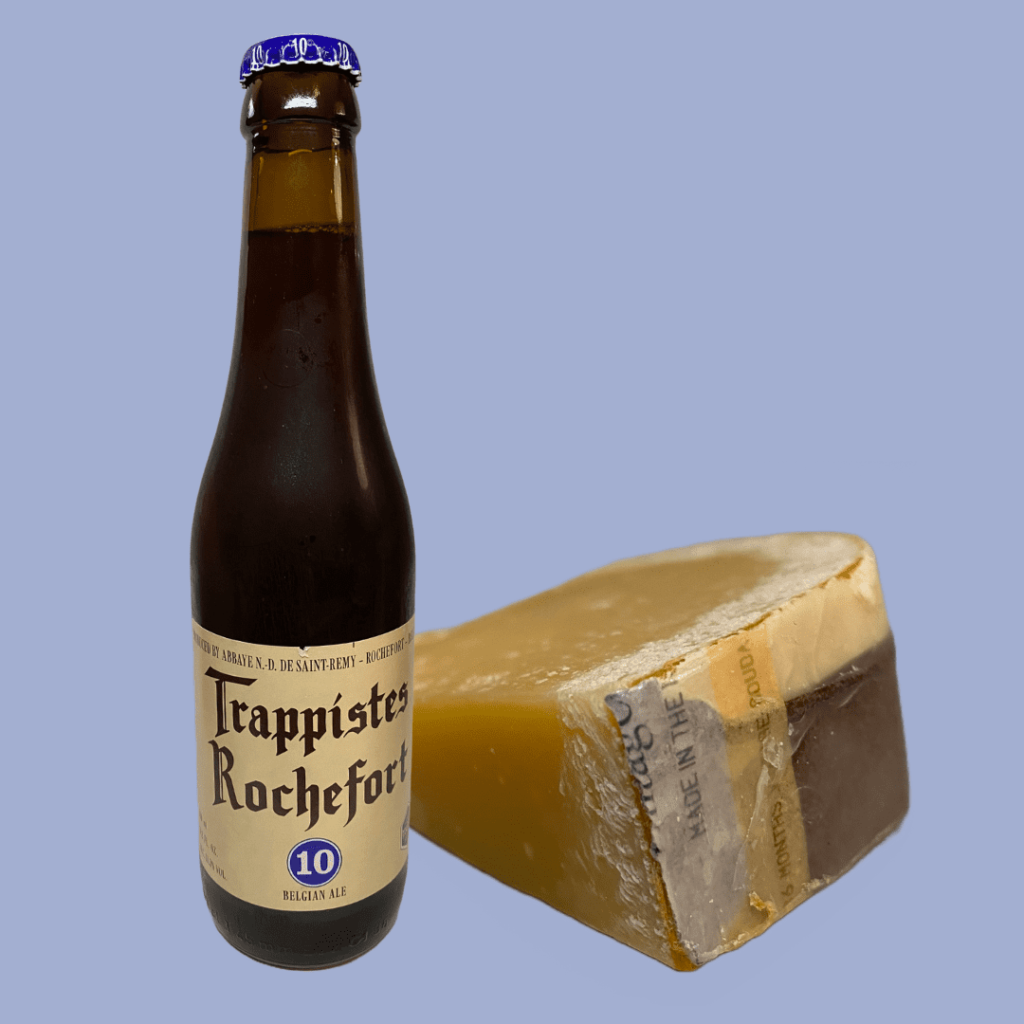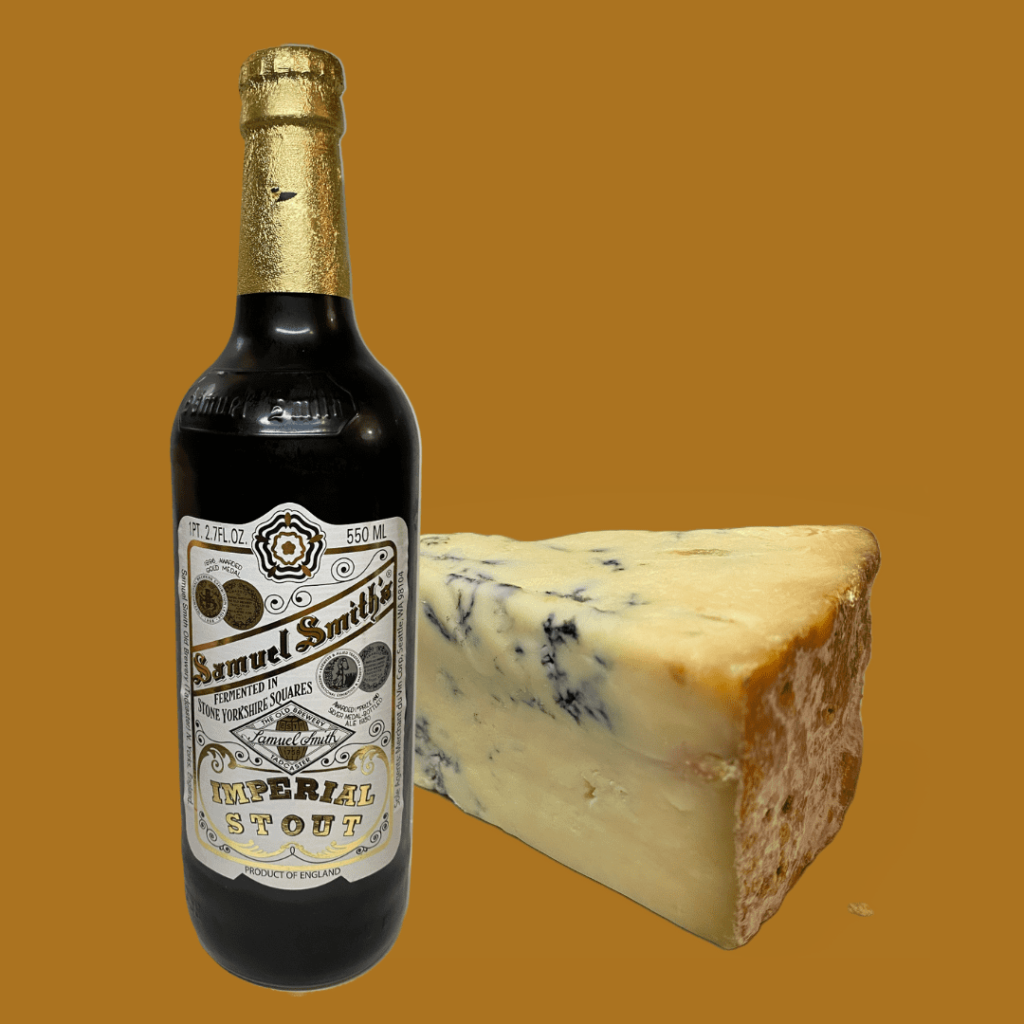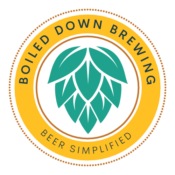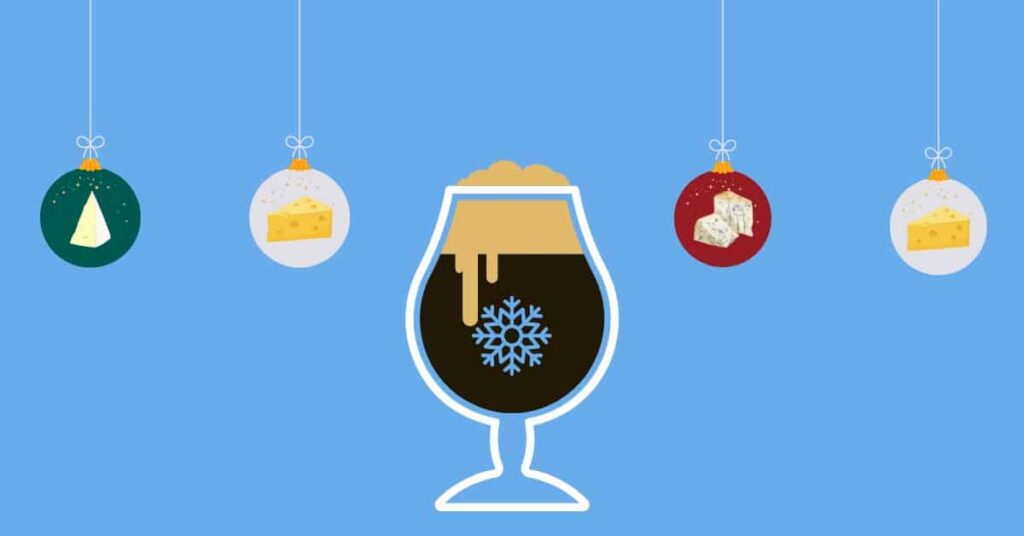With low temperatures and short days, the winter months usher in beers that are often intense and full-flavored. This pairing guide offers classic and unique beer and cheese pairings for the winter season.
Table of Contents
Soft-Ripened Goat Cheese and Gose

The Beer: NoDa Cranberry Gose
While the winter beers on this list are generally dark and strong, fresh and bloomy rind-type cheeses need a lighter pairing, and Gose is an excellent style that matches up to these cheeses. Gose is a light, effervescent sour ale originally from Germany. Beyond its sour base, Gose is characterized by salt and coriander additions, which gives the beer light salinity on the front end and a refreshing finish from the coriander and high carbonation level.
NoDa Cranberry Gose is a holiday seasonal take on the standard Gose with cranberries added that give the beer a pale pink hue. While fruit addition typically brings sweetness to sour ales, that isn’t the case with this beer, as the naturally tart cranberries fit in perfectly with the lactic acid acidity of the Gose base beer. The beer is sparkling and fresh, with a hint of salinity, making it a highly refreshing ale.
Other Gose beers, like Westbrook Gose, would also be a good fit here as well as some Berliner Weisse beers with lower acidity levels.
The Cheese: Cypress Grove Humboldt Fog
Humboldt Fog is an American soft-ripened goat cheese with slightly tangy acidity, earthiness, and restrained pungency compared to fresh goat cheese. The texture of the cheese is very creamy in the center, with a softer layer near the rind. Humboldt Fog is an excellent substitute for the standard chèvre, brie, or Camembert on a cheese board.
Why Soft-Ripened Goat Cheese and Gose pair well
Humboldt Fog, or other fresh or bloomy-rind cheeses, typically have delicate flavors that many beer styles can easily overpower, but a light sour ale like Gose matches the intensity well. The ripened goat cheese has a tanginess that the lactic acid in the Gose fits perfectly without overpowering it. Salt and coriander additions to Gose also complement the minerality and herbal elements of the cheese. The high carbonation level in the beer helps to scrub away the rich creaminess and barnyard-like characteristics of the goat cheese.
Gruyère and Doppelbock

The Beer: Paulaner Salvator
First brewed in the 1600s by Paulist monks for sustenance during the Lenten fasting period, Doppelbock makes an excellent holiday winter beer. The toasty maltiness and elevated alcohol of the beer pair well next to a fireplace and hearty meats, cheeses, and sauces found in the holiday season. While always a strong, malt-focused lager, Doppelbocks range in color, strength, and flavor, making it a great style to compare multiple beers side by side.
Paulaner Salvator, the original Doppelbock first brewed in 1634, is a classic example of the style. The beer is characterized by a deep toasted malt character and moderate sweetness with mild notes of dark fruit. The high alcohol content of the beer, moderate carbonation, and subtle herbal hops help leave the beer with a clean finish that balances the maltiness on the front end of the beer.
The Cheese: Emmi Kaltbach Le Gruyère AOP
Emmi Kaltbach Le Gruyère AOP is a cave-aged Alpine cheese with a complex, full flavor that makes it a natural pairing for many winter beers. The semi-hard cheese has a rich, nutty quality that gives way to a slightly earthy and sweet element. The umami level in the cheese is very high, highlighted by crunchy crystals internal to the cheese that pack a huge flavor punch.
Why Dopplebock and Gruyère pair well
In this pairing, the strength of the cheese and the beer are well-matched. The strong toasty character of the Doppelbock complements the nuttiness of the Gruyère, and the elevated alcohol and subtle herbal hops of the beer help to cut through the fattiness and umami of the cheese to reset the palate. The cheese and the beer both have mild, fruity undertones, and pairing the two together brings this fruitiness out more in the beer and the cheese.
Sharp Cheddar and IPA

The Beer: Sierra Nevada Celebration IPA
Originally a hop-forward ale from England, India Pale Ale (IPA) was reinvented in the US at the beginning of the craft beer movement in the 1970s and 80s, sporting citrusy and resinous American hops. American-style IPAs are now a global powerhouse of modern craft beer, leading to other popular spin-off styles like Hazy IPA (also called New England IPA).
As the weather gets cooler, the original American IPAs from the beginning of the craft beer movement provide a hop-forward beer with excellent malt balance.
Celebration IPA is an October-December seasonal IPA from Sierra Nevada, a cornerstone American craft brewery. Made with fresh hops from the fall US hop harvest, the beer packs a crisp hoppy punch but is balanced by a malty backbone. Modern West Coast IPAs have slowly become lighter in color overall, but this beer has the subtle caramel sweetness and deep amber color from caramel malts that characterized the original American IPAs. Despite being decades old in the American craft beer world of constant innovation, this one stands the test of time and is a holiday season classic.
The Cheese: Ashley Estate Seaside Rugged Mature Cheddar
Ashley Estate Seaside Rugged Mature Cheddar contains all the hallmarks of a classic aged cheddar. Sharp, nutty, and very rich, the cheddar is a great match for many winter beers. The texture is slightly crumbly, and the cheese pops with saltiness, highlighted by crunchy crystals throughout that are full of umami.
Why IPA and Sharp Cheddar pair well
For sharp cheddar, a malt-balanced IPA is the best match, and Sierra Nevada Celebration IPA fits the bill. The IPA and the cheddar have similar intensities, with the bitterness in the beer matching the sharpness of the cheese and the caramel malty notes of the beer matching the nuttiness of the cheese. The mild sweetness in the beer’s body counterbalances the cheese’s saltiness, and the slightly elevated alcohol content and medium carbonation help cut through the fattiness of the cheese.
Belgian Dark Strong Ale and Aged Gouda

The Beer: Rochefort 10
Belgian Dark Strong Ale, sometimes called Quadruple, is at the top of the strength scale for monastic Belgian ales. While typically high in alcohol content, Belgian Dark Strong Ales are well attenuated and present dark fruit, Belgian yeast esters, and high carbonation making them highly drinkable.
Rochefort 10 is an Authentic Trappist Product made at the Abbey of Notre-Dame de Saint-Rémy in Belgium. Highly effervescent and with notes of stone fruit and spicy Belgian yeast, the beer has a nice sweetness that gives way to a dry finish. In addition to cheese, this beer would pair well with strong-flavored winter dishes like venison with a sweet or savory sauce.
The Cheese: Clarina 3-year Gouda
Clarina 3-year Gouda is a hard cheese with an intense nutty flavor and a light caramel undertone. Due to the hardness of the cheese, it breaks well into individual pieces for snacking. Other aged cheeses high in umami character, like parmesan, could also fill this spot on a cheese board.
Why Belgian Dark Strong Ale and Aged Gouda pair well
Due to the long aging process and low moisture content, aged Gouda is packed with umami and saltiness. Belgian Dark Strong Ale matches Gouda’s caramel and strong nutty characteristics with its caramel-like and toasty qualities. The very high carbonation level and sweetness of the beer help wash away the cheese’s saltiness, but it still finishes dry without lingering sweetness.
Imperial Stout and English Stilton

The Beer: Samuel Smith Imperial Stout
Imperial Stout was originally brewed as a stronger version of dark English ales, which helped it hold up during transport as an export beer. However, Imperial Stout has become a staple of American craft beer, which has taken the strength and flavor profile of the beer style to new levels. American varieties of Imperial Stout tend to have more body, higher bitterness, and a more assertive flavor profile than the English versions.
Samuel Smith Imperial Stout, an English Imperial Stout, brings big, toasty, chocolatey malt flavors and restrained but noticeable roasted flavors. The beer’s overall balance is towards the malty side, but the roasted malts and hops bring the beer back into balance, giving the beer just a slight residual sweetness. The beer is black with a tan foam head that lasts when swirled in the snifter, the preferred glass for the style.
The Cheese: Neal's Yard Colston Bassett Stilton
No cheese board is complete without blue cheese, and English Stilton is a holiday season classic. Neal’s Yard Colston Bassett Stilton has the characteristic pungency of blue cheese but is less potent than Roquefort. The cheese is crumbly but slightly creamy and breaks into bite-size pieces full of flavor.
Why Imperial Stout and English Stilton pair well
Neals Yard’s Colston Bassett Stilton has the most assertive flavor profile of the cheeses in this article, and it needs a similarly strong beer to complement it. Samuel Smith Imperial Stout brings a lot to the table to cut through the pungency of blue cheese. The hops and roasted malts bring bitterness that interplays with the pungency of the cheese, while the sweet, toasty maltiness of the beer’s base counteracts the cheese’s saltiness. The elevated alcohol content of the beer and the medium carbonation also scrubs the richness of the cheese away.

